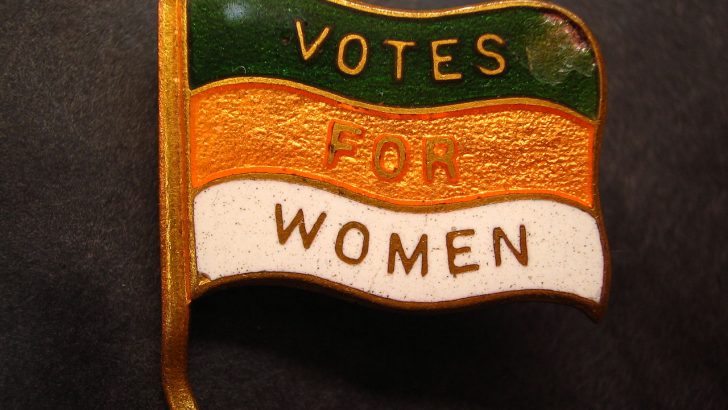Irish Women and the Vote: Becoming Citizens
editors: Louise Ryan and Margaret Ward (Irish Academic Press, €19.99)
Emily Keyes
February 2018 marks the centenary of women over the age of 30 gaining the right to vote in Ireland and Britain, yet over 100 years and two feminist movements later, Irish women continue to struggle for equal representation in government, work, and home.
Therefore, the reissue of Louise Ryan and Margaret Ward’s book on Irish suffrage is essential, as it allows readers to reflect on what has changed and yet what has remained the same for Irish women since gaining full citizens’ rights 100 years ago.
The book provides vital information on the first wave of the Irish women’s movement, noting the importance of such figures as Anna Haslam and groups like the Dublin Women’s Suffrage Association (DWSA) and the Watching the Court committee (WTC) in altering the prejudiced view of women’s place in society, as well as the need for female participation in a government if women were required to obey the same laws as men.
Often, it is Mary Wollstonecraft, an English advocate for women’s rights from the 18th Century and the writer of the ground-breaking work of feminist philosophy, A Vindication of the Rights of Woman, who gets all the attention when we talk about the history of the women’s movement, so it was refreshing to read about Quakers Anna Haslam and her husband Thomas, called her ‘co-feminist’, helping to advance the cause through writing and participation in the DWSA, whose meetings were regularly attended by members of the Irish parliament.
Learning about the WTC committee was also fascinating; in addition to fighting for the right to vote, Irish suffragists were also monitoring the justice system, highlighting the illegality of sexual assault and abuse cases that invariably ruled in favour of the perpetrator.
Cliona Murphy’s essay on the humour of the suffrage movement is a vital addition to the book, reminding readers that suffrage and its proponents were not always serious; they knew how to make a good joke and use humour as a vehicle for promoting their message and attracting otherwise prejudiced people to their cause.
This levity is both essential to the women’s movement as well as this essay collection, as it nicely breaks up the heavier pieces on abuse and imprisonment.
Indeed, the essays included in this book broadcast the multifaceted nature of the original Irish women’s movement. The movement itself had different stages, the first in the late 18th Century and the second, of course, in the early 19th. Though many of the events and protests occurred in Dublin, suffrage activity went on all over Ireland, as far away as Galway and Belfast.
Research
Contributors to this book also make the important point that the activities and communities of the suffrage movement varied by place, with women in Galway focusing on researching and writing about their cause, submitting their work to local papers and even establishing a suffrage library despite severe lack of funds, while suffrage efforts in Belfast were focused within the female factory-working community.



